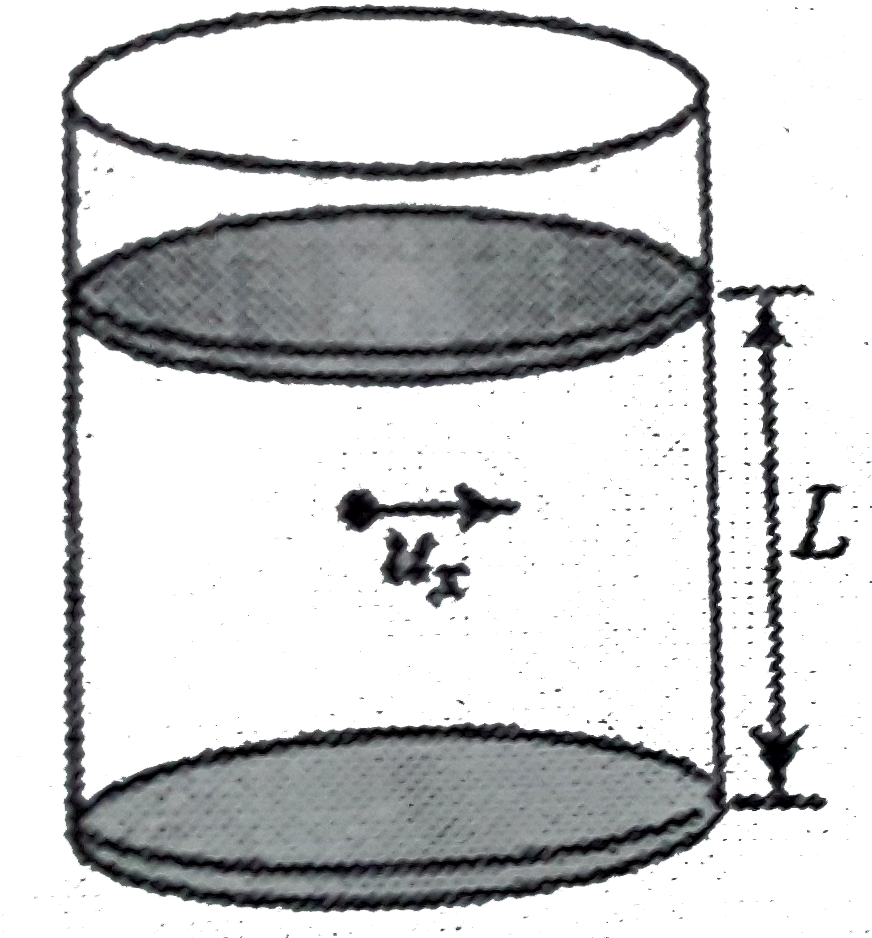From the kinetic theory of gases, predict the effect on the pressure of a gas inside a cubic box of side l by reducing the size so that each side measures l/2.
To solve the problem of predicting the effect on the pressure of a gas inside a cubic box when the size is reduced from side length l to l2, we can use the ideal gas law and the relationship between pressure and volume.
1. Understand the Initial Conditions:
- The initial side length of the cube is l.
- The initial volume V1 of the cube can be calculated as:
V1=l3
2. Determine the New Volume:
- When the side length is reduced to l2, the new volume V2 is:
V2=(l2)3=l38
3. Apply the Ideal Gas Law:
- According to the ideal gas law, we have:
P1V1=P2V2
- Here, P1 is the initial pressure, V1 is the initial volume, P2 is the final pressure, and V2 is the final volume.
4. Substitute the Volumes:
- Substitute V1 and V2 into the equation:
P1(l3)=P2(l38)
5. Rearrange the Equation:
- Rearranging the equation to solve for P2:
P2=P1⋅l3l38=P1⋅8
6. Conclusion:
- Therefore, the final pressure P2 is:
P2=8P1
- This means that reducing the size of the cubic box to half its original dimensions increases the pressure of the gas by a factor of 8.
- The initial side length of the cube is l.
- The initial volume V1 of the cube can be calculated as:
V1=l3
- When the side length is reduced to l2, the new volume V2 is:
V2=(l2)3=l38
- According to the ideal gas law, we have:
P1V1=P2V2
- Here, P1 is the initial pressure, V1 is the initial volume, P2 is the final pressure, and V2 is the final volume.
- Substitute V1 and V2 into the equation:
P1(l3)=P2(l38)
- Rearranging the equation to solve for P2:
P2=P1⋅l3l38=P1⋅8
- Therefore, the final pressure P2 is:
P2=8P1
- This means that reducing the size of the cubic box to half its original dimensions increases the pressure of the gas by a factor of 8.
Topper's Solved these Questions
Similar Questions
Knowledge Check
- Question 1 - Select One
According to the kinetic theory of gases, the pressure exerted by a gas on the walls is measured as
Arate of change of momentum imparted to the walls per second per unit areaBmomentum imparted per second to the walls per unit areaCchange of momentum imparted to the walls per unit areaDchange in momentum per unit volume - Question 2 - Select One
The kinetic molecular theory of gases predicts pressure to rise as the temperature of a gas increases. It is because
Agas molecules collide more frequently with the container wallsBgas molecules collide less frequently with the container wallsCgas molecules have less kinetic energyDgas molecules collide less energetically with container walls - Question 3 - Select One
The kinetic theory of gases gives the formula PV=13Nmv2 for the pressure P exerted by a gas enclosed in a volume V. The term Nm represents
Athe mass of a mole of the gasBthe mass of the present in the volume VCthe averatge mass of one molecule of the gasDthe total number of molecules present in volume V
The kinetic theory of gases gives the formula PV=13Nmv¯2 for the pressure P exerted by a gas enclosed in a volume V. The term Nm represents
View SolutionThe kinetic theory of gases gives the formula PV=13Nmv¯2 for the pressure P exerted by a gas enclosed in a voluem V. The term Nm represents
View SolutionSuppose there are N molecules each of mass m, of an ideal gas in a container. The x component of velocity of a molecule is denoted by ux. The gas is enclosed using a horizontal piston of area A as shown.

If the piston is moved in so as to reduce the volume of gas by half, keeping the temperature of gas constant, we know from the gas law that the pressure will be doubled. On microscopic level the increase in pressure on the Vertical side walls is becauseView SolutionA system consists three particles, each of mass M lying on the corners of an equilateral triangle of side 2l. If the length of each side of the triangle is decreased to l, without the gain in kinetic energy of the particles, the work done by an external agent is given by
View SolutionKinetic theory of gases is a generalization offered by Maxwell. Boltzmann, Clausius, etc. to explain the behaviour of ideal gases. This theory assumes that ideal gas molecules neither attract nor repel each other. Average kinetic energy of gas molecules is directly proportional to the absolute temperature. A gas equation called kinetic gas equation was derived on the basis of kinetic theory
PV=13mv2
If the absolute temperature of a gas in a fixed volume is quadrupled, then the velocity in intial and final states would be related as :View Solution

